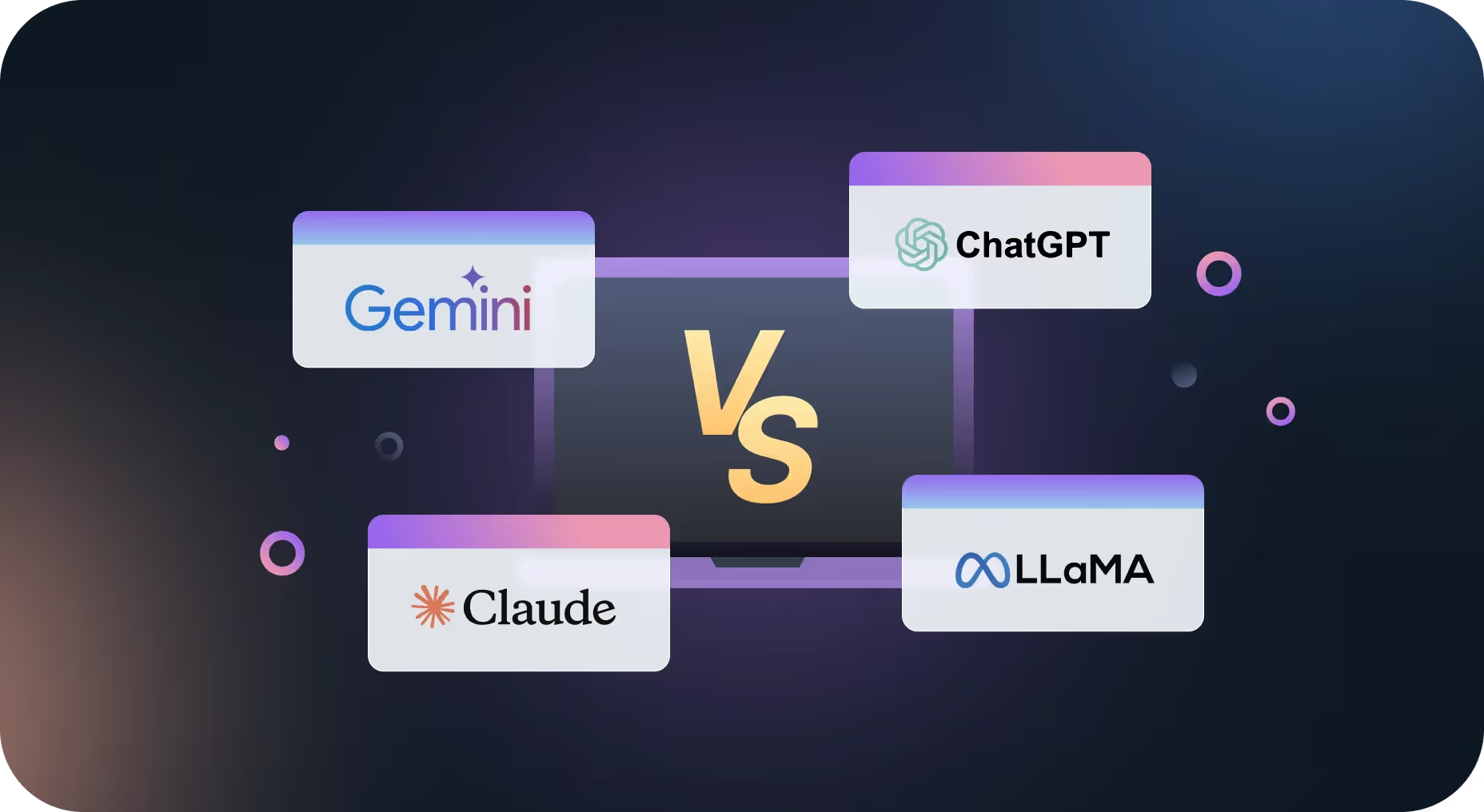
Which Large Language Model (LLM) is Right for You?
From text generation and problem-solving to data analysis and programming, each LLM has unique features tailored to specific applications. Discover which LLM best suits your needs.

Reading time: 7 minutes
Which Large Language Model (LLM) is Right for You?
Large Language Models (LLMs) have transformed the way we utilize technology, offering powerful capabilities in text generation, problem-solving, data analysis, and programming. Each model possesses unique features tailored to specific applications. In this article, we’ll explain the differences between the most popular LLMs, their strengths and weaknesses, and how to determine the one best suited to your needs.
What Are LLMs?
LLMs are advanced AI systems capable of understanding, processing, and generating vast amounts of text. They are utilized across industries, from marketing and customer service to healthcare and software development. The choice of an LLM depends on your technical expertise, goals, and budget. This article will focus on four prominent LLMs: Llama, ChatGPT, Claude, and Gemini, providing an overview of their features and common use cases.
Interested in a quick summary? Jump to the Summary section.
1. Llama (Meta)
Llama, developed by Meta, is an open-source LLM designed for efficiency and accessibility. By making their model open-source, Meta aims to foster innovation and collaboration.
How It Works
Llama is trained on large datasets to understand and generate text. It is lightweight and runs on less powerful hardware compared to other models, making it a cost-effective option for organizations with limited resources.
The latest version, Llama 3.2, includes features like visual reasoning, enabling it to analyze documents and charts, generate captions, and identify objects in images based on textual descriptions.
Advantages:
- Open-source: Free to use and customize.
- Accessible: Suitable for simple tasks like text generation.
- Efficient: Operates on less powerful systems.
- Customizable: Ideal for technical fine-tuning and tailored solutions.
Drawbacks:
- Limited functionality: Less effective for complex tasks.
Best for:
- Researchers experimenting with open-source tools.
- Companies requiring bespoke solutions backed by technical expertise.
2. ChatGPT (OpenAI)
ChatGPT, developed by OpenAI, offers a versatile solution for a wide range of applications, catering to both technical and non-technical users.
How It Works
ChatGPT is built on a generative pretrained model, trained on diverse text sources. It is accessible via a user-friendly interface or API, with multiple versions such as GPT-4 and GPT-4 Turbo offering enhanced capabilities.
Advantages:
- User-friendly: No technical expertise required.
- Versatile: Suitable for customer service, marketing, and education.
- Strong performance: Excels in understanding language and producing creative content.
Drawbacks:
- Cost: High usage can become expensive.
- Functional limits: Not ideal for highly technical or niche tasks.
Best for:
- General applications like customer support, creative content, and education.
- Businesses looking for an easy AI entry point.
3. Claude (Anthropic)
Claude, developed by Anthropic, emphasizes ethical, safe, and reliable interactions, excelling in handling sensitive and complex textual tasks.
How It Works
Claude uses transformer architecture to generate responsible outputs. It does not access the internet, minimizing risks associated with uncontrolled or harmful information.
Advantages:
- Ethics and safety: Designed to prioritize responsible outputs.
- Reliable: Minimizes inappropriate or harmful responses.
- Intuitive: Simplifies complex analyses into understandable insights.
Drawbacks:
- Limited creativity: Not suitable for storytelling or imaginative tasks.
- Accessibility: Less available compared to other models.
Best for:
- Processing sensitive data.
- Applications where ethics and reliability are critical.
4. Gemini (Google)
Gemini, by Google, combines advanced linguistic and multimodal functionalities, capable of processing both text and visual data.
How It Works
Gemini integrates a robust LLM with multimodal technology, allowing it to analyze and generate both text and visuals. Seamless compatibility with Google services like Gmail and Google Docs makes it highly practical.
Advantages:
- Multimodal capabilities: Processes text and images simultaneously.
- Google integration: Works seamlessly within Google’s ecosystem.
- Advanced analytics: Combines textual and visual data for deeper insights.
Drawbacks:
- Dependency on Google: Optimized for use with Google products.
- Development stage: Some features are still limited.
Best for:
- Data visualization: Blending text and visuals for reports.
- Workflow optimization: Automating tasks in Google Workspace.
Summary of Models
| AI Model | Key Features |
|---|---|
| Llama (Meta) | Ideal for technical users requiring open-source, customizable solutions. |
| ChatGPT (OpenAI) | Broadly applicable, user-friendly, and perfect for general use cases. |
| Claude (Anthropic) | Best for ethical and sensitive applications. |
| Gemini (Google) | Excels in multimodal functionalities and Google ecosystem integration. |
Conclusion
Whether you’re embarking on a creative project, streamlining code development, or seeking secure solutions for sensitive data, there’s an LLM tailored to your needs. Each model offers distinct benefits: from Llama’s open-source flexibility to ChatGPT’s user-friendliness, Claude’s ethical reliability, and Gemini’s multimodal prowess.
Need help selecting or implementing an LLM? Contact us today at info@lumans.ai and discover how AI can propel your organization forward!


